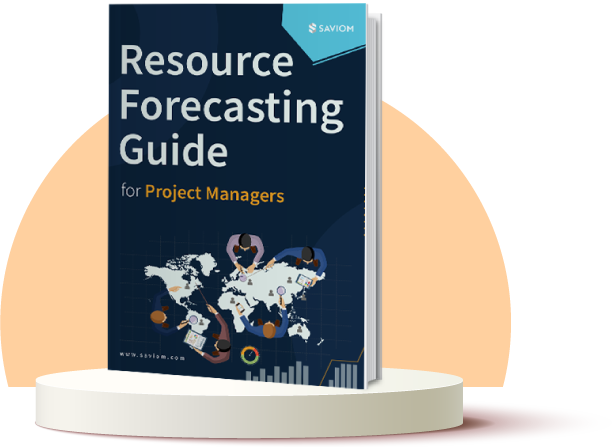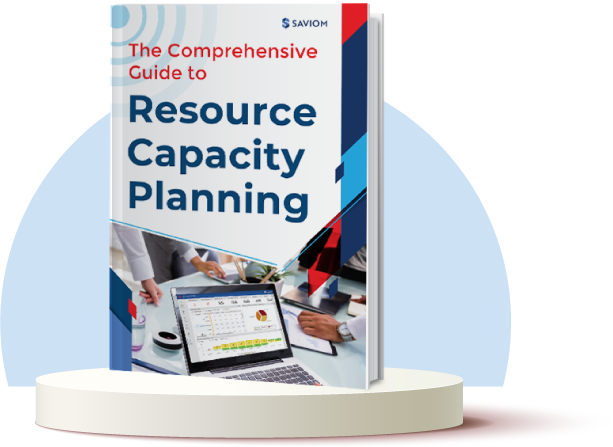Every organization thrives on having “The RIGHT people in the RIGHT roles, at the RIGHT time and cost, with the RIGHT skillset.”
Is it possible to achieve this year-on-year?
A successful workforce planning process that enables HR departments to strategize for their future capabilities can make this achievable.
The workforce is undoubtedly the most important tangible asset for every organization. Despite its importance, it is often not carefully planned, measured, or optimized. Many organizations do not have visibility of their current or future workforce requirements.
There is also a lack of a consistent process by which they conduct workforce planning. As a result, it hurts both the top and the bottom lines of their business. It has consistently topped the wish list of HR executives within any organization. But it has always remained a challenging area when it comes to execution.
Strategic or Operational; Long-term business strategy or Short-term goals: Where do I need to pay maximum attention? These questions often baffle C-level executives.
This article describes the characteristics and different workforce planning processes and how successful organizations have adopted this practice.
But first, let’s start with workforce planning definition.
What is workforce planning?
Workforce planning is the process of planning and ensuring that the right number of human resources are available for the right role at the right location at the right cost with the right competencies.
In other words, it is a process of matching the workforce’s capacity and capability to meet its demands, now and in the future. By forecasting future work demand, organizations can identify the gap against the capacity so that the necessary resourcing steps can be taken to bridge the gap.
Types of workforce planning
There are primarily two types of workforce planning: strategic and operational. Let us go over some of the workforce planning definitions.
A strategic workforce plan is developed to help the organization achieve its long-term vision. Strategic workforce planning is created by designing a process that proactively anticipates future human resource requirements. It will ensure that the organization has a highly skilled workforce needed to meet its business goals. It assists in the following:
- Support the organization’s strategic plan
- Address external workforce factors that affect the entire business
- Maintain organizational capacity
- Mitigate risk exposure
On the contrary, operational workforce planning helps in deciding what needs to be done to achieve the business’s immediate priorities. It aims to create a focused, realistic plan to deliver unit-level business objectives. It helps to run the day-to-day activities in the company as efficiently as possible. At this level, it also complements an organization’s strategic plan for the long-term future.
Operational workforce planning focuses on immediate resource requirements for the activities within a six to twelve months horizon. If the organization plans for its workforce beyond three years, it comes under strategic workforce planning.
Anything in between can be described as tactical workforce planning, which has not received much attention in the industry.
What is the importance of workforce planning?
Organizations spend a significant amount of time and money to define their vision and future roadmap. Consulting companies have developed frameworks and have built various offerings around this subject. In this case, one can visualize the new business model and what resources will be needed in the future.
If goals and strategies are our vision of an ideal future, shouldn’t we focus our attention on achieving our long-term goals? Are short-term goals as important as long-term vision?
Extensive research has indicated that short-term goals are just as important as long-term ones. Without the former, there is a higher chance of failure in meeting the ultimate objective. Many HR organizations and consulting companies primarily focus on strategic workforce planning and suggest a blueprint around that. At the same time, they must not overlook the organization’s immediate requirements, which can be the need of the hour.
If there is a challenge in addressing short-term business requirements, it will derail its long-term strategy. Effective resource capacity planning addresses the short-term and medium-term requirements of workforce planning. It is the process of forecasting the gap between capacity and demand.
What is workforce optimization?
Workforce optimization is an ongoing process of matching workforce supply with the changing workforce demand to increase billable utilization. It requires centralizing information from various systems for decision-making. It uses all aspects of the complete workforce management life cycle and provides valuable insights into the workforce’s performance based on customer experience.
It implies asking your employees to “work smart and not work hard.”
It is a business strategy that balances customer satisfaction, service levels, resource allocation, operational costs, and other key performance metrics for a business to get the best performance out of the employees.
A workforce planning example
Let us take a hypothetical situation in an organization where:
- Three different projects are running with different start and end dates.
- For two projects, the end date cannot be extended. However, the third project has some flexibility with its timeline.
- There are three different categories of resources based on their skill set.
- Some of the selected resources can play the role of a project manager along with their primary skill.
- We have ten workers in each category, and all are deployed in projects with a certain amount of resource loading.
- Many resources are partially available and have some spare capacity.
At this stage, the firm gets a new order for which there is additional work of ten resources in each category for six months duration (Billable work for thirty FTE for six months period). The work requires two project managers on a full-time basis for the duration of the project. However, the remaining activities can be carried out on an hourly basis.
Without a proper workforce planning process, the firm may decide to hire thirty new personnel to deliver this project. As a result, the firm will have excess capacity at the end of the project.
Is it a cost-effective solution?
According to Paycor, “Labor Costs contribute to 70% of total business investment, including wages, benefits, payroll, and related taxes.”
- A systematic planning framework will raise the following questions for the decision-maker:
- What happens at the end of six months? Is there visibility of more projects or any other strategic work? If not, the company has to let go of thirty newly hired employees. How will it impact the brand image of the company?
- Is it possible to hire so many new employees within such a short notice period? Will you be forced to compromise on quality that can impact the delivery?
- How does the organization maximize its profit from this new initiative?
- Are we fully utilizing the capacity of the existing workforce with this quick decision? If not, can we adjust the current workforce’s allocation and get maximum utilization out of them?
After applying capacity planning principles, the organization will decide to:
- Free up two project managers from the existing pool of resources after reallocating their work to other project managers having excess capacity.
- Extend the timeline of the project, which has flexibility.
- Find the Total available capacity within each skill category.
- Calculate the gap between demand and available hours.
- Arrive at the workforce requirement in each category based on this gap.
- The project is for a short duration, and there is no information on future projects; use a contingent workforce instead of hiring new resources for delivery.
The above example highlights the importance of operational workforce planning. This immediate business requirement cannot be ignored at the cost of its long-term human resource strategy.
Operational workforce planning (benefits & best practices)
Operational workforce planning enables an organization to achieve short-term objectives. Keeping track of day-to-day operations, assigning people to prepare for immediate operational or resource needs, and addressing ad-hoc changes come under its umbrella.
What are operational workforce planning benefits?
A workforce planning model delivers both tangible and intangible benefits. Some benefits, such as cost reduction, can be immediately realized. Other benefits, such as employee satisfaction, have long-term implications. In this section, we discuss some of its benefits.
Reduce project resourcing cost significantly
With operational workforce planning, an organization can significantly reduce resource-related costs within a project. It can be achieved by deploying the right resource (no under/over skilled) to the project, leveraging global resources from a low-cost location, avoiding over/under allocation of resources, etc.
Improve billable and strategic utilization of the workforce
The process forecasts different types of utilization of resources. It identifies resources spending time in administrative or low-priority work and mobilizes them to more productive work.
Create visibility of resource competency
The workforce planner provides visibility of people’s information across the matrix organization and controls the rights to modify them. The system can achieve a 360-degree view of all types of work demands.
Deploy competent resources to the appropriate opportunity
The process ensures that you do not deploy a senior resource for a junior position, which will be a waste of his skillset. At the same time, if an inexperienced resource is given the task of an important role, there will be delivery challenges.
Forecast skill shortage proactively and apply necessary measures
Resource planning solutions can identify skill shortages ahead of time and take corrective action. It retrains and upskills bench resources ahead of time to make them billable, use a contingent workforce for short-term assignments, etc.
Ensure that excess capacity is not wasted with early forecasting
The system can identify excess capacity ahead of time for necessary corrective action. It brings forward project timelines to absorb additional resources, restart initiatives that were shelved earlier, etc.
Align sales and delivery by managing pipeline opportunities
It enables the sales team to estimate and forecast demand for various resources based on the sales pipeline opportunities. The delivery team ensures that the right resources are available at the right time to finish the project as they are given sufficient lead time.
What are operational workforce planning best practices?
Operational workforce planning has been critical for all projects to reduce resourcing costs. It allows businesses to reorganize and become responsive to the changing market conditions quickly. It goes beyond the basics of measuring the demand against capacity. Some of the best practices include:
Minimize project resource cost with a combination of local and global resources
Multinational companies have made global resources from low-cost countries accessible. It has created new opportunities for organizations to control costs and increase their profitability without compromising delivery qualities.
In a survey conducted by HR.com, “60% of businesses unanimously agreed that they saw cost-saving benefits within twelve months of using a workforce management solution.”
Forecast resource capacity vs. demand in advance
The workforce planning software allows businesses to forecast capacity vs. demand by role, department, team, location, skills, etc. It also allows people with different roles to view their specific information at the right time, which helps in decision-making.
Track Competency Matrix Across the Enterprise
It is critical to track and keep up-to-date information about the competency of the workforce. It allows the right resource with skill, experience, qualifications, individual preferences, etc., to be allocated to the proper work. It will enable resource managers to identify the right resource for a new opportunity.
Manage pipeline projects effectively
Once a prospect reaches a certain probability of closure, capacity planning activities can be initiated for the pipelined opportunities. It will avoid any last-minute rush and improve the hiring process as there will be sufficient lead time, and the quality of the new resources will also not be compromised.
Forecast profitable and overall resource utilization
The operational workforce planning process allows tracking and forecasting short or long-term billable, strategic, and overall utilization. It can be achieved with the help of an appropriate tool. One can take corrective actions to ensure high utilization and protect the business’s profitability.
Publish project vacancies and manage bench effectively
It effectively utilizes internal resources who have finished their previous assignment and are waiting for new work. It will provide foresight into both future resource needs and the details of the available workforce.
Streamline resource requisition and allocation process
Most of the conflict happens when different projects are eyeing a key resource for their delivery. The resource requesting and allocations are done through email or phone requests. In this scenario, a person can be double-booked if multiple clients select the same person. The project that confirms billing in the first instance is given priority to get the resource.
Strategic workforce planning (benefits & best practices)
Strategic workforce planning enables HR to plan for the capabilities they need in the future. It ensures that the company’s workforce has the right size, shape, cost, and agility for the future.
What are strategic workforce planning benefits?
Strategic planning looks into the future requirements of the workforce. The organization may want to expand or sell some of its business functions as a part of its long-term strategy. The business may re-badge human resources from another organization during M&A or transition part of its workforce to its partner if they are selling certain entities. These decisions come under long-term strategic planning. Here are some of the benefits:
Utilize the capacity of the workforce
- Avoid surplus or excess labor; If not appropriately managed, it will result in layoffs or costly hiring.
- Provide sufficient lead time for hiring so that quality is not compromised.
- Performance-based planned attrition to maintain quality; create a productive workforce.
- Use technology, such as RPA, AI, etc., to improve efficiency.
- Build a supply of contingent resources using empaneled vendors.
Minimize employee turnover and hiring Cost
- Provide a well-defined career path to the workforce.
- Encourage multi-skill building using Individual Development Programs.
- Allow movement of the workforce within departments.
- Create a retention plan for talent management.
- Use employee referral programs for hiring new talents.
According to Kornferry, “By 2030, there will be a talent deficit of roughly 85 million people, and if left unchecked, could result in $8.5 trillion unrealized annual revenue.”
Develop skills for future requirements
- Identify and align skills as per business needs.
- Hire resources as per current and future requirements.
- Promote cross-skilling and make the workforce flexible.
- Match business goals with employee development aspirations.
- Assist the employees in pursuing higher education or industry certification.
Improve overall productivity
- Right resource for the right job; no under/over skilled resource for any position
- Retaining critical employees for a more extended period promotes employee loyalty.
- Engage the workforce with job rotation and provide new opportunities
- Minimize Demand Supply Gap with effective resource capacity planning.
- Optimize billable resource utilization of each employee.
What are strategic workforce planning best practices?
Strategic workforce planning best practices align the organization’s talent strategy with the business goals and long-term objectives. Following are some of the best practices in this area:
Company-wide collaboration
Strategic workforce planning is aligned with the business strategy of an organization. Although it is an HR-driven initiative, other departments also have a significant role to play. Input from all stakeholders can be collected using a workforce planning template which will help derive specific action plans.
Use past data judiciously
Lessons learned and the use of past data can provide deep insights into a company’s business. Examining the patterns that occurred, when the business succeeded, and what your staffing levels were like at that time can give a good indication of staffing requirements. It helps to break this down into different segments (department, project, etc.) so that the overall picture becomes more evident.
Define metrics for performance measurement
The decision-making and review process becomes streamlined with cold, hard stats. An unplanned attrition rate will decide how many new hires need to be hired on a regular basis. It also needs to be planned on a staggered basis so that there is minimum impact.
Get stakeholder’s buy-in in advance
One needs to get executive buy-in for a widespread project. This initiative will impact every department within an organization. Unless the leadership team has approved certain key decisions, they will not get implemented. With management support, one can get complete visibility of the company’s new direction.
Workforce planning is a continuous process
Many organizations fail because they do the whole process once and forget about it after making initial changes. The workforce will change over time regardless of what happens. People will leave. People will retire. People will be promoted. At the same time, the business model will also change with new product lines. A workforce strategy needs to address all these parameters.
What are the steps in workforce planning?
Developing talent is a critical component of successful workforce planning. By talent, we mean the various skills and competencies of the workforce as per the business requirements. Talent acquisition ensures that you have the right number of resources for both short-term and long-term opportunities.
The following are different steps:
Forecast & take stock of workforce capacity
- Take an inventory of all the full-time, part-time, contractor, or freelance resources of your organization.
- Note those resources that will be available within 1 – 2 months after finishing their assignment.
- Include resources who will be joining or leaving during this period.
- Assign calendar (Workweek and Holiday list) to your resources if they are working from different locations and time zones.
- Track the skills and competencies of the selected resources.
- Identify the hot skills and tag them against the applicable resources.
Establish work-in-hand (demand) in short-term
- List down all the current and future projects, including internal projects.
- Include the projects which are there in the pipeline with a 75% or above probability of closure.
- Account for non-project activities like BAU, support maintenance, administrative work, training, etc.
- Categorize the projects into billable, strategic, and non-billable projects and prioritize them.
Perform workforce demand against capacity gap analysis
- Analyze resource capacity vs. demand
- Identify the gap between resource capacity and demand
- Identify skill shortages or excesses.
- Prepare a resource plan to bridge the gap.
Establish a workforce planning framework for excess/shortfall
For shortfall of resources:
- Decide on a full-time or contingent workforce based on the duration of the assignment.
- For full-time hiring, identify the locations and skillset and consider future deployability.
For excess of resources:
- Bring forward the timeline of the existing projects by deploying additional resources.
- Restart some of the projects that were shelved earlier
- Ask the sales team to look for new opportunities based on the available skillset actively.
Book the available resources for the identified projects
- Assign the right resources to the right Project.
- Apply selection criteria such as resources belonging to the same location, years of experience, cost rate, etc.
- Ensure you are not allocating over-skilled or under-skilled resources
- Allocate generic / ghost resources as placeholders on future projects.
With an understanding of how to develop an effective workforce planning strategy, let’s take a look at some of the best workforce planning practices.
Best practices for successful workforce planning
Successful workforce planning requires a deep understanding of both business goals and resourcing needs. Enlisted below are some workforce planning best practices that organizations can leverage to their advantage.
Regularly review the workforce plan
Successful workforce planning requires ongoing monitoring and adjustment to ensure its effectiveness. This involves regularly reviewing resource data, key performance indicators, and market trends to identify any shifts that may impact workforce needs.
This way, organizations can proactively address emerging challenges and optimize their talent management strategies accordingly. Regular feedback from managers, employees, and stakeholders also plays a crucial role in identifying areas for improvement and implementing necessary changes.
Leverage workforce planning software
Technology and analytics have revolutionized the field of workforce planning, providing organizations with powerful tools to gather, analyze, and interpret data for informed decision-making. By leveraging workforce management software, organizations can gain valuable insights into their current and future workforce needs.
These solutions can help identify skill gaps, assess workforce capabilities, and forecast future talent requirements more accurately. Additionally, automated systems can streamline administrative tasks, freeing up HR professionals to focus on strategic workforce planning initiatives.
Offer internal training, external courses, and mentorship programs
Training and upskilling programs are essential for ensuring that employees have the necessary skills and competencies to meet evolving job requirements. As part of workforce planning, organizations should identify skill gaps and develop targeted training programs, IDP, and succession plans to address them.
This can include internal training initiatives, external courses, mentoring programs, etc. By equipping employees with the knowledge and skills they need to succeed, organizations can enhance employee engagement, retention, and performance, while also future-proofing their workforce against emerging skill demands.
Promoting diversity and inclusion
Diversity and inclusion are critical aspects of successful workforce planning. Embracing diversity in the workforce brings together resources with different backgrounds, perspectives, and experiences, leading to greater innovation, creativity, and problem-solving.
Organizations should actively include DEI initiatives in their workforce planning strategies for sustainable growth and development. A diverse and inclusive workforce not only fosters a positive work environment but also enables organizations to effectively cater to the diverse needs of their customers and clients.
By embracing these best practices, organizations can achieve their organizational goals and position themselves for long-term success in a rapidly changing world.
How can workforce planning software help create an effective workforce plan?
The importance of workforce planning cannot be overstated. It can shape a successful future for organizations and help them maximize the potential of their human capital. Let’s take a look at how organizations can leverage robust workforce planning software to create design and implement an effective workforce plan:
- Enterprise-wide visibility- The tool offers 360-degree resource visibility into critical metrics such as demand, availability, capacity, financials, etc. This enables organizations to evaluate workforce capacity and project demand for current and future opportunities.
- Forecasting and capacity planning- The forecasting and capacity planning capabilities of the tool allow managers to identify and mitigate capacity vs. demand gaps ahead of time.
- Real-time reporting analytics- The tool’s intuitive reporting dashboards and analytics provide in-depth insights into KPIs in real-time. Reports such as forecast vs. actual, utilization heat maps, project vacancy, and people on the bench can help managers identify potential bottlenecks and plan for corrective action.
- Competency matrix- The in-built competency matrix captures and maintains the professional attributes of the workforce. It helps organizations to keep track of their resources’ capabilities.
- What-if analysis- The what-if analysis facility of the tool enables managers to simulate various scenarios and pick the most-well suited workforce plan.
Therefore, these features and modules play a key role in effective workforce management.
Conclusion
Some of the large companies are at risk of becoming too large to adapt to changes quickly. They put a lot of time and effort into defining the long-term vision and strategizing on the expansion plan in multiple geographies. As a result, many immediate priorities are overlooked, and they can end up in a sticky situation.
While long-term goals are important, short-term business objectives also need to be addressed promptly. One needs a proper workforce plan to steer the company in the right strategic direction, even if there is no large project in the pipeline in the near future. It improves the bottom line as you spend less on the workforce and generates more revenue per employee due to greater efficiency.
The Glossary
The SAVIOM Solution
SAVIOM is the market leader in providing highly configurable and robust solutions for managing and planning your workforce. With 20 years of experience, it has a presence in many countries. Many Fortune 500 companies are currently using and have benefited from this product. SAVIOM also provides tools for resource management, project portfolio management, and professional service automation. The workforce planning software can be configured for any industry, and it helps solve short-term resourcing problems.


















